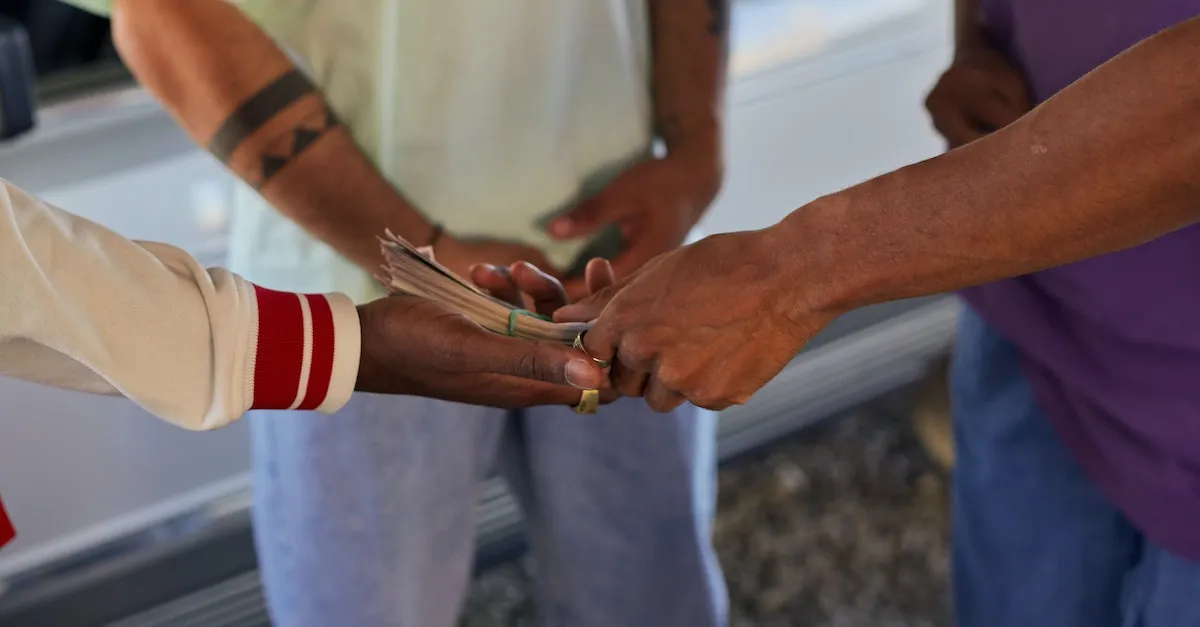Gangs In Austin, Texas: History, Prevalence And Law Enforcement Efforts
With its vibrant music scene and unofficial motto to ‘Keep Austin Weird,’ Austin may seem like an unlikely place for organized gang activity. Yet even this eclectic city has been impacted by gangs over its history. For those unfamiliar with the city, questions may arise – are gangs a problem in Austin?
If you only have a minute, here’s a quick overview: While gang activity exists in Austin, it is considered relatively low compared to other major US cities. Law enforcement dedicates resources to monitor and curb gang violence through targeted investigations and community engagement programs.
In this approximately 3000 word article, we will take an in-depth look at the history, prevalence, activities and law enforcement response related to gangs in Austin, Texas. We aim to provide a comprehensive understanding of how gangs have impacted Austin, and what is being done to address the issue.
History and Origins of Gangs in Austin
Gang activity in Austin, Texas dates back several decades, with the emergence of various gangs and sets that have left a lasting impact on the city. Understanding the history and origins of these gangs is crucial in comprehending the current state of gang activity in Austin.
1970s Origins of Crips and Bloods Sets
In the 1970s, Austin experienced an influx of gang activity with the arrival of Crips and Bloods sets from Los Angeles. These sets established themselves in various neighborhoods, primarily focusing on drug trafficking, territorial disputes, and violence.
The migration of these notorious gangs to Austin was largely fueled by the desire for new drug markets and a chance to extend their influence beyond the West Coast.
The presence of Crips and Bloods sets in Austin brought about a rise in gang-related crimes, including drug-related violence and homicides. Law enforcement agencies in Austin were challenged with combating these new threats and preventing the further proliferation of gang activity.
Rise of Local Sets in 1980s Crack Epidemic
The 1980s crack epidemic further fueled gang activity in Austin, leading to the rise of local gangs and sets. The accessibility and profitability of crack cocaine attracted individuals from various backgrounds, resulting in the formation of neighborhood-based gangs.
During this time, several African-American and Hispanic gangs emerged, such as the Latin Kings, Texas Syndicate, and Tango Blast. These local sets became deeply entrenched in their respective communities, engaging in criminal activities such as drug trafficking, robberies, and turf wars.
The crack epidemic not only contributed to the growth of gang activity but also impacted the socio-economic landscape of Austin. The devastating effects of crack cocaine addiction and violence were felt throughout the city, leading to increased efforts by law enforcement and community organizations to address the issue.
Recent Gang Migration Trends
In recent years, Austin has witnessed a shift in gang migration trends, with the arrival of gangs from other parts of Texas and neighboring states. The influence of gangs such as MS-13, Surenos 13, and Tango Orejon has been observed in Austin, highlighting the ever-evolving nature of gang activity.
These new arrivals have posed additional challenges for law enforcement agencies, who must adapt their strategies to effectively combat the presence and activities of these gangs. Collaboration between local, state, and federal law enforcement agencies has become crucial in addressing the complex dynamics of gang migration and preventing the spread of violence and criminal behavior.
For more information on gang activity and efforts to combat it in Austin, you can visit the official website of the Austin Police Department at https://www.austintexas.gov/department/police.
Scope and Impact of Gang Activity in Austin
Gang activity in Austin, Texas, has been a persistent challenge for law enforcement agencies in the area. With a rich history dating back several decades, gangs have left a lasting impact on the community.
Understanding the scope and impact of gang activity is crucial in developing effective strategies to combat this issue.
Estimated Gang Membership Numbers
While it is difficult to obtain precise figures on gang membership, law enforcement estimates suggest that there are several thousand gang members operating in Austin. These gangs vary in size, with some consisting of only a handful of members, while others have larger networks spanning multiple neighborhoods.
The presence of gangs in Austin is a reality that cannot be ignored.
Criminal Activities and Revenue Sources
Gangs in Austin engage in a wide range of criminal activities to sustain their operations and generate revenue. These activities include drug trafficking, weapons smuggling, extortion, and human trafficking.
It is important to note that gangs often adapt and evolve, utilizing new technologies and tactics to expand their criminal enterprises. This poses a significant threat to the safety and well-being of the community.
Geographic Concentrations
Gang activity in Austin is not evenly distributed throughout the city. Certain neighborhoods and areas have a higher concentration of gang-related incidents and criminal activities. These areas are often associated with higher rates of violence, drug-related offenses, and property crimes.
Identifying these geographic concentrations is crucial for law enforcement agencies to allocate resources effectively and target their efforts in these areas.
Impacts on Crime Rates and Community Safety
The presence of gangs in Austin has a direct impact on crime rates and community safety. Gang-related violence contributes to an increase in homicides, assaults, and other violent crimes. Additionally, the influence of gangs extends beyond their immediate criminal activities.
Gangs often instill fear and intimidation in communities, making residents feel unsafe and affecting their quality of life. It is essential for law enforcement agencies to work closely with the community to address these issues and ensure the safety and well-being of all residents.
For more information on gang activity in Austin and law enforcement efforts to combat it, visit https://austintexas.gov/department/gang.
Law Enforcement Efforts Against Gangs
Law enforcement agencies in Austin, Texas have implemented various strategies and initiatives to combat the presence and activities of gangs. These efforts are aimed at ensuring public safety, reducing gang-related crimes, and dismantling gang networks.
By understanding the dynamics of gang activity and adapting their approach, law enforcement has made significant progress in addressing the issue.
Specialized Investigative Units
To effectively tackle gang-related crimes, law enforcement agencies have established specialized investigative units dedicated to gathering intelligence and conducting thorough investigations. These units consist of highly trained officers who possess in-depth knowledge of gang culture, symbols, and criminal activities.
By focusing on proactive strategies, such as surveillance and undercover operations, these units are able to identify gang members, monitor their activities, and gather evidence for successful prosecutions.
Task Forces and Partnerships
In addition to specialized units, law enforcement agencies in Austin have formed task forces and partnerships to enhance their efforts against gangs. These collaborations involve local, state, and federal agencies working together to share intelligence, resources, and expertise.
By pooling their resources, law enforcement can effectively target and dismantle larger criminal networks that span across different jurisdictions. These partnerships also enable a more coordinated and comprehensive approach to combatting gang-related crimes, resulting in a higher rate of successful prosecutions.
Targeting Major Crimes and Leaders
Law enforcement agencies recognize the importance of targeting major crimes committed by gangs and their leaders. By focusing on high-profile and violent offenses, such as drug trafficking, armed robberies, and homicides, law enforcement can disrupt gang operations and dismantle their power structures.
This approach not only removes dangerous criminals from the streets but also weakens the overall influence and control of the gang. By prioritizing investigations and prosecutions of major crimes, law enforcement sends a strong message that gang-related activities will not be tolerated.
Using Community Outreach to Deter Recruiting
Law enforcement agencies understand the significance of community engagement and outreach in deterring gang recruitment. By actively collaborating with community organizations, schools, and residents, law enforcement can educate and raise awareness about the dangers and consequences of joining gangs.
Programs aimed at at-risk youth, such as after-school activities, mentorship, and job training, provide alternatives and opportunities for individuals who may be susceptible to gang recruitment. By fostering positive relationships with the community, law enforcement agencies can build trust and encourage community members to report gang activities, leading to more successful investigations and prosecutions.
Social Service Initiatives for At-Risk Youth
After School and Mentoring Programs
Recognizing the importance of providing a safe and structured environment for at-risk youth, Austin has implemented various after-school programs and mentoring initiatives. These programs aim to keep young individuals engaged in positive activities during the critical hours after school, when they may be vulnerable to negative influences.
Organizations like the Boys and Girls Club of Austin and Big Brothers Big Sisters have been instrumental in providing mentorship and guidance to young people, fostering a sense of belonging and offering them opportunities to develop valuable life skills.
These initiatives not only help prevent youth from getting involved in gang-related activities but also contribute to their overall personal and academic growth.
Job Training and Gang Intervention
One of the key strategies in addressing gang involvement among at-risk youth is providing them with viable alternatives and pathways to success. Job training programs have become an integral part of social service initiatives in Austin.
These programs equip young individuals with the necessary skills and knowledge to secure stable employment, reducing their susceptibility to gang recruitment and criminal activities. Organizations like Workforce Solutions and Skillpoint Alliance offer vocational training in various industries, including construction, healthcare, and technology.
By empowering at-risk youth with marketable skills, these programs not only deter them from joining gangs but also contribute to the economic development of the community as a whole.
Focus on Underprivileged Neighborhoods
Austin’s social service initiatives also place a strong emphasis on reaching out to underprivileged neighborhoods that are disproportionately affected by gang activity. Recognizing the systemic factors that contribute to the vulnerability of these communities, efforts have been made to provide targeted resources and support.
Local community centers and non-profit organizations collaborate with law enforcement agencies to establish community outreach programs that address the unique needs of these neighborhoods. These initiatives may include access to educational resources, mental health services, and recreational facilities.
By investing in the well-being of these communities, Austin aims to break the cycle of gang involvement and create a more inclusive and thriving city for all its residents.
The Outlook for Gangs in Austin Going Forward
Potential for Continued Migration
As Austin continues to grow and thrive, there is a potential for continued migration of gangs into the city. The allure of a booming economy, a vibrant music scene, and a laid-back lifestyle may attract gang members from other regions.
Additionally, the proximity to the US-Mexico border makes Austin an attractive location for drug trafficking, which often goes hand-in-hand with gang activity. Law enforcement agencies need to stay vigilant and adapt their strategies to address this potential influx.
Rising Property Values and Displacement
One factor that could impact the future of gangs in Austin is the rising property values and resulting displacement of low-income communities. As neighborhoods gentrify and housing becomes more expensive, lower-income individuals and families may be forced to move to other areas.
This could disrupt existing gang networks and potentially lead to a decrease in gang activity in certain neighborhoods. However, it is important to note that displacement does not guarantee the eradication of gangs, as they may simply relocate to other areas within or outside the city.
Losing Appeal Among Youth
Another factor that may shape the future of gangs in Austin is the changing attitudes and aspirations of the younger generation. With increasing access to education, job opportunities, and mentorship programs, many young people are finding alternative paths to success.
Organizations and initiatives aimed at diverting at-risk youth from gang involvement have seen positive results in reducing recruitment rates. By investing in youth empowerment programs and providing support systems, Austin can continue to steer young individuals away from gang activity and towards more positive and constructive paths.
Conclusion
In summary, while Austin has seen gang activity emerge and persist over the decades, coordinated law enforcement and community initiatives have likely helped keep its prevalence lower than many comparable cities. Maintaining adequate resources and programs to provide vulnerable youth alternative paths will be key for Austin’s future outlook. With vigilance and balanced mitigation efforts, the city can continue making progress against dangerous gang influences.








